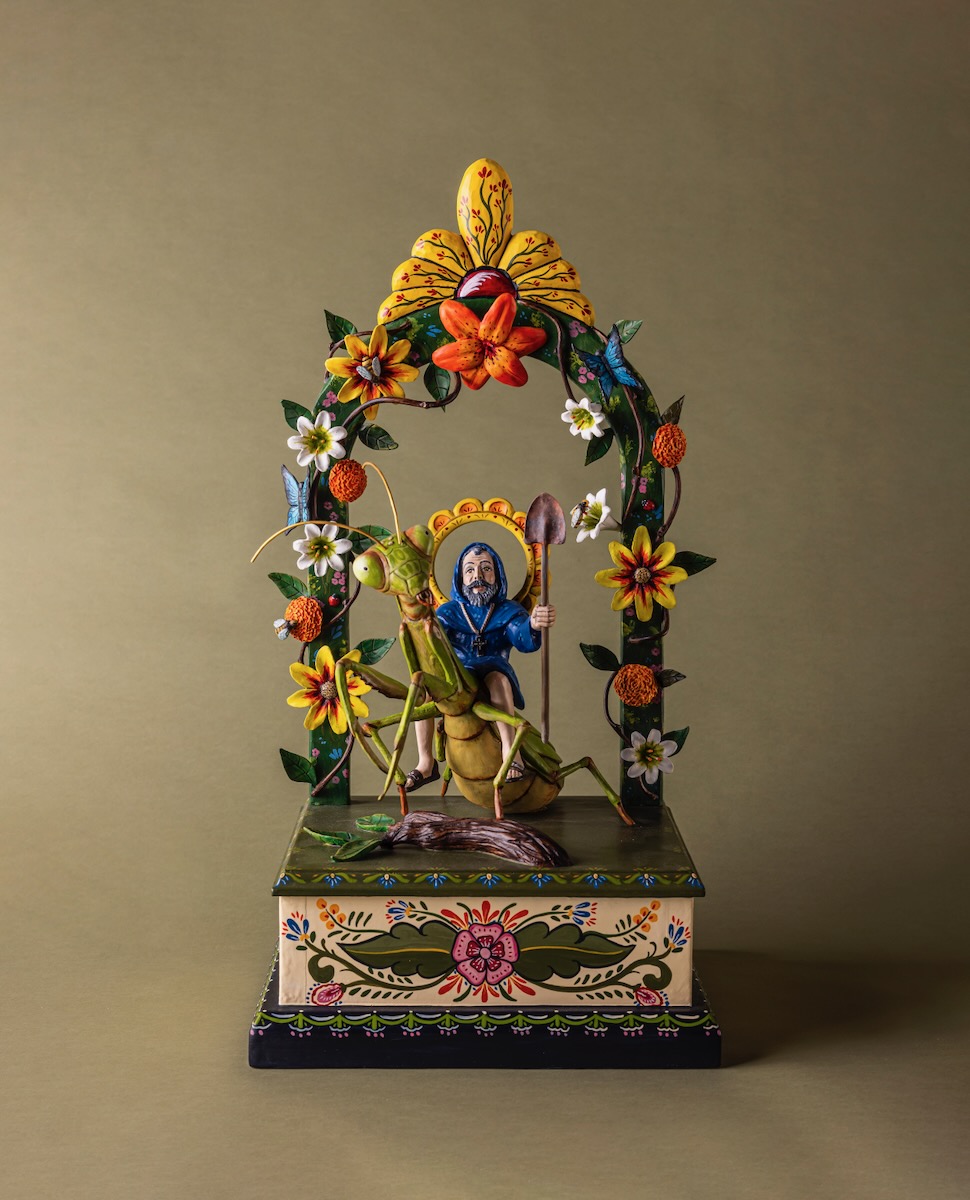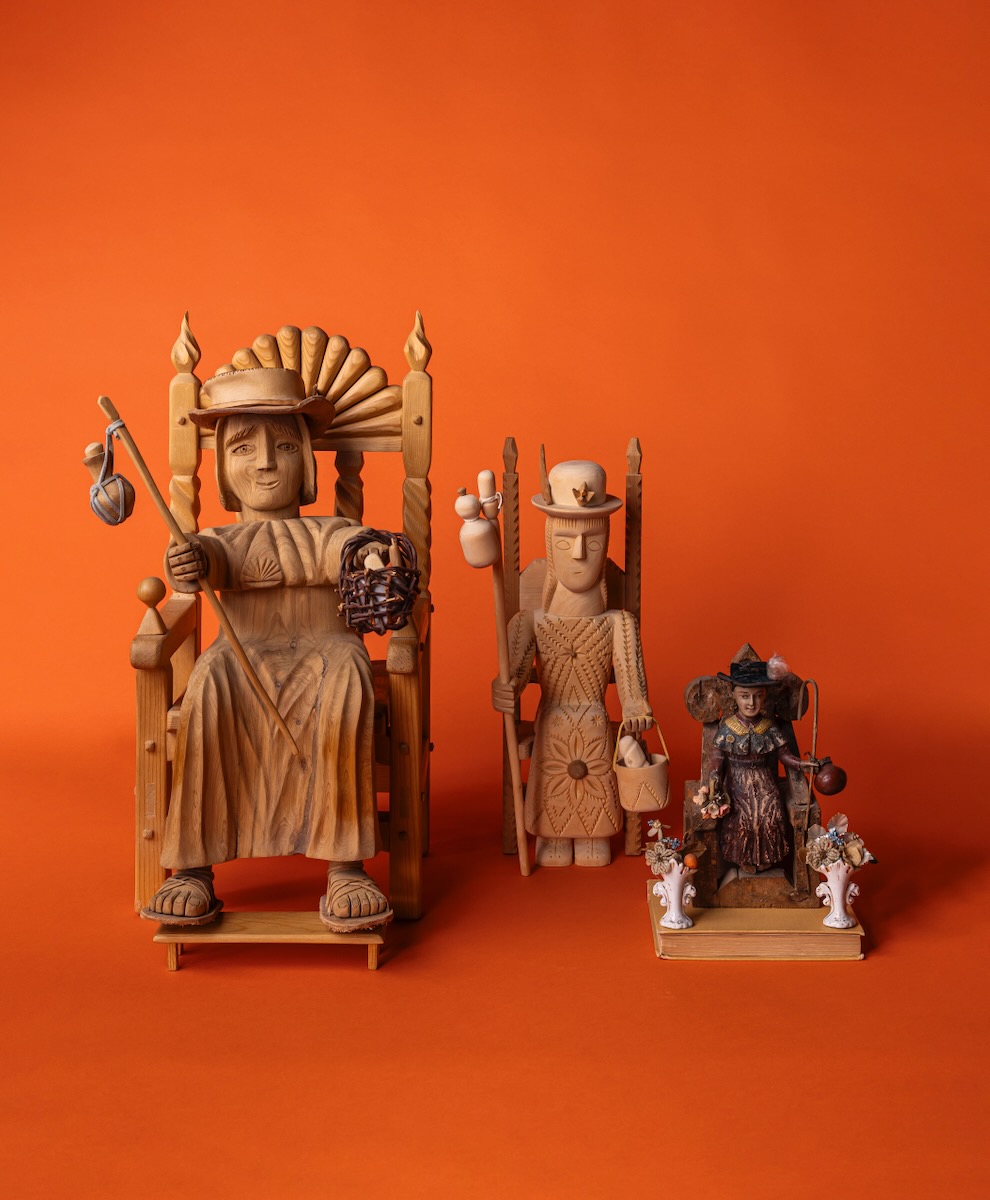Nearing its centenary, Traditional Spanish Market is the oldest juried Hispanic art show and sale of its kind. Started by Mary Austin and the Spanish Colonial Arts Society to promote traditional, local Hispanic arts in 1926, it paused during and after World War II, reopening in 1965. A Youth Market was introduced in 1981 to celebrate how these artistic traditions are passed down through the generations. Plus, to encourage new artists to help those traditions not only survive, but thrive.
Chart the history of Spanish Market and you’ll also chart the changing face of bultos, three-dimensional carvings of religious figures. While the same saint might appear over the year––say, San Ysidro, patron saint of farmers––the way he is depicted changes in the hands of expert Santeros. Whether the piece is unpainted, allowing you to trace the wood grain along a drape of fabric, or brightly painted and intricately carved, each work is a testament to the artistry and craftsmanship of the people who create them. The Spanish Colonial Arts Society let us into their collection vaults to see some of their contemporary and historic bultos. Spoiled for choice, we share a few of our favorites.
A Look Into Collection Vaults at the Spanish Colonial Society

San Fiacre y Los Patrones del Jardin, 2017, Arthur Lopez, Santa Fe, New Mexico, Wood, gesso, paint, varnish 2017.012 (Purchased at 2017 Spanish Market).
San Fiacre
Astride a super-sized praying mantis and clutching his signature spade, San Fiacre––patron saint of gardeners and taxi cab drivers––looks ready to make a house call to a gardener in distress. Arthur Lopez’s work is a joyous riot of garden fecundity. Bees and other pollinators land on flowers that entwine a green bower. Lapis-colored butterflies rest for a moment as if in mid-flight. Even the sun–or is it a sunflower?–speaks to a garden well-loved and tended. Even flowers line San Fiacre’s sky-blue cassock.

From left to right: Santo Niño de Atocha, 1999, Richard Salazar, New Mexico, Wood, leather, cotton, grape vine. Santo Niño de Atocha, late 20th-early 21st c., Gloria Lopez, Cordova, New Mexico, Wood, leather. Holy Child of Atocha, Santo Niño de Atocha, mid-late 19th c., Maker Unknown, Mexico (figure), New Mexico (chair), Wood, gesso, water-based paint, fabric.
Santo Niños
Three dramatically different depictions of Santo Niño de Atocha (the Sacred Child of Atocha) but bound together by a centuries-old artistic tradition. All three don wide-brimmed hats, capes, and staffs, signs telling us that he is a pilgrim. As the patron saint of those unjustly imprisoned, travelers, people in danger (and yes, pilgrims) Santo Niño de Atocha comes equipped with a gourd of water and a basket filled with either food or flowers, always ready to help those in need.
Story by Julia Platt Leonard / Photography by Tira Howard
 Subscribe to TABLE Magazine‘s print edition.
Subscribe to TABLE Magazine‘s print edition.
